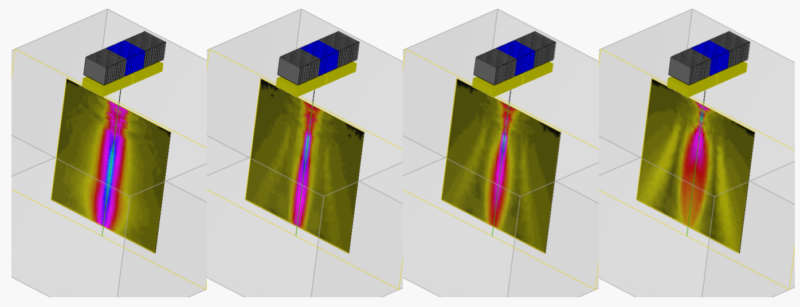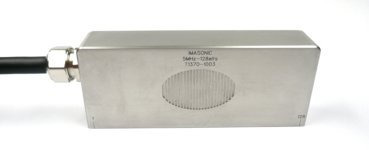
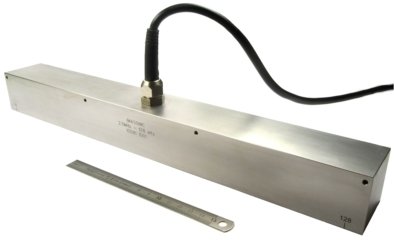


Automated high-performance inspection of submerged parts: metal plates, bars, pipes, composite materials, forged parts, etc.
The scanned length (L) is maximised by combining a large number of elements (typically between 64 to 512) with the widest possible inter-element pitch (p).
Electronic focusing can be combined with scanning, for example, to inspect at different depths. In general, electronic deflection is little used for this type of application.
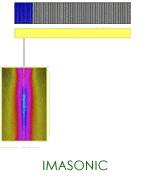
| Freq. (MHz) |
Nb elts | Pitch p (mm) |
Active size (mm) |
Housing size (mm) |
| 10 | 64 | 0.5 | 32 x 10 | 40 x 16 x 35 |
| 10 | 128 | 0.5 | 64 x 10 | 75 x 20 x 40 |
| 5 | 64 | 1 | 64 x 15 | 75 x 20 x 40 |
| 5 | 128 | 1 | 128 x 15 | 140 x 25 x 45 |
| 2.25 | 128 | 1.5 | 192 x 15 | 205 x 30 x 45 |
| 2.25 | 64 | 2 | 128 x 20 | 140 x 30 x 35 |
*Indicative values
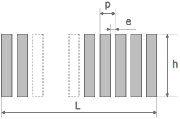
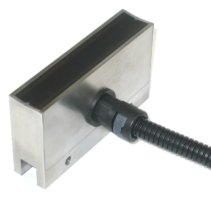 Example of probe with prefocused active area and ruggedized cable
Example of probe with prefocused active area and ruggedized cable
On linear arrays, electronic focusing is possible only in the plane of incidence. However, in the perpendicular plane (passive aperture), it is possible to adjust focal depth and lateral resolution by using mechanical pre-focusing, by choosing the appropriate radius of curvature, active width (h) and water path.
